
For many companies, LinkedIn is one of the most important social marketing channels. You can use it to generate new leads to a business, and traffic to a website. Of course, knowing it’s an important channel and getting results from your LinkedIn marketing strategy are two very different things.
At the company I work for LinkedIn is the number one source of referral traffic to the site after Google. Importantly this traffic converts. We’ve generated £100,000+ in contracts from new clients already this year from LinkedIn.
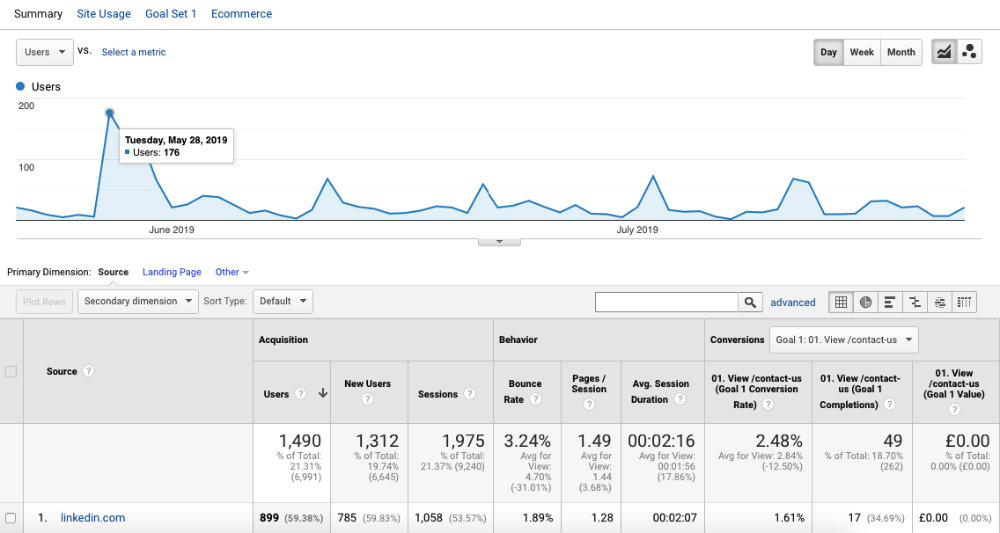
In this post, I’m going to walk you through the LinkedIn marketing strategy that we used to get such results. Importantly this LinkedIn marketing strategy is replicable. You could spend 20 minutes reading this guide and directly apply the lessons I share to your business. Let’s get started.
How to Use LinkedIn for Business Marketing
The starting point for any business strategy is setting clear goals. You can develop a LinkedIn marketing strategy that benefits your business in different ways. For example, at Accelerate Agency, the company I work for, we have multiple LinkedIn marketing goals.You can develop a LinkedIn marketing strategy that benefits your business in different ways. For example, at a company that I work for, we have multiple LinkedIn marketing goals. These are:
- Source of referral traffic for the website
- Place to generate guest post opportunities
- Source of leads for the company
With goals in place, it’s possible to quantify the outcome you are looking for. This will help you define your strategy. It also allows you to set benchmarks, or Key Performance Indicators to use business-speak, to benchmark your progress.
For example, I could break down each of those three goals I mentioned above into the following monthly targets for the business.
- Get 500 unique visitors a month from LinkedIn
- Generate 12 guest post opportunities through new LinkedIn contacts
- Land two fresh leads a quarter from LinkedIn
The goals that you set for your LinkedIn marketing strategy should be ambitious, but not completely unobtainable. This will help you push yourself to achieve your targets. Over time you will need to periodically review those targets to make sure they are relevant. These are the fundamentals behind any good business development strategy.
How to Define Your Ideal Audience
With your LinkedIn marketing goals in place, it’s time to define your targeting. You need to get your message out to the right people. Most marketing campaigns for business will target a variation of the following three audiences:
- Existing and potential customers or clients
- Ideal customers or clients
- Peers and companies operating in your niche
The closer your targeting aligns with this target audience the better your results.
If you are developing a marketing campaign for your business you will know your customers. You will probably also be able to describe your ideal client and name the competitors and key influencers in your vertical.
If you are at an agency developing a LinkedIn marketing strategy for a client you might need to go through some form of customer profiling exercise to get this information. A competitor analysis will provide you with these kinds of insights.
In addition to defining your audience, you need to consider why they will engage with your content. I normally conduct a customer mapping exercise to do this.
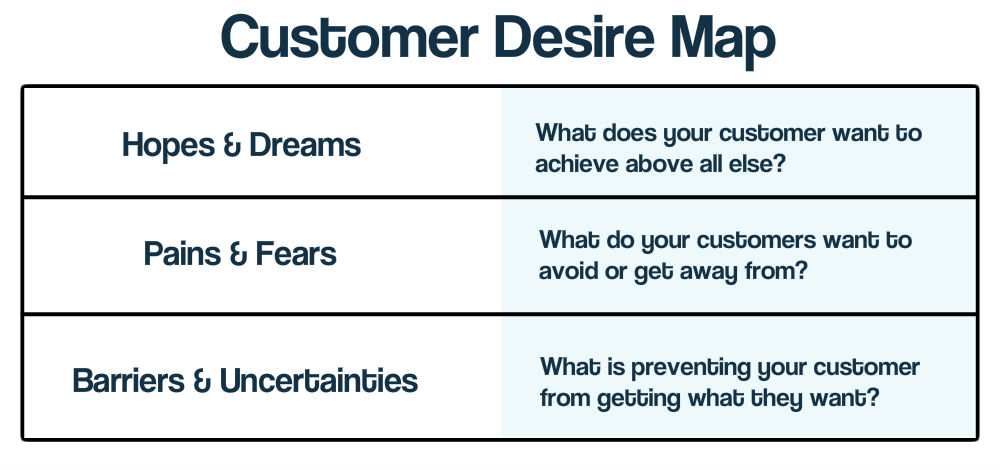
A customer mapping exercise won’t take you too long to complete. Fundamentally the point of this exercise is to get you to stop thinking about your goals and consider the interests and motivations of the target audience.
Below is an example of some common motivations for the three audiences:
- Existing & Potential Customers: They want to know they are getting the best service. You generally want to impress them with the depth of your knowledge. Essentially you want to be viewed as a thought leader. Impressing your customers will help reduce churn and increase organic referrals.
- Ideal Customers: Don’t want to miss out on important news. If you can impress them or make them scared that a competitor has the edge they are likely to switch over to you. Assuming they have a demand for your service and you can overcome people’s inherent laziness.
- Peers & Competitors: Want to get in on the key trends so they can impress their clients and peers. Expect competitors to imitate your strategies if they work. However, being the one developing the strategies will help you position yourself as a thought leader. This can lead to opportunities like guest posts and speaking at events.
- Random People: LinkedIn is a social network populated by people who want to make a good impression with their peers. Your job is to provide them with an opportunity to look clever or be cool.
At this stage, you should be able to explain who you want to engage with and why they will care about what you have to say. That’s the theoretical foundations of your LinkedIn marketing strategy covered. Now for the implementation.
How to Increase the Number of Connections on LinkedIn
Once you’ve defined your audience you need to reach them. As an individual, you can either target people through your personal network, relevant LinkedIn groups or both of these channels.
This is hardly a groundbreaking insight.
When you review some of the most successful networkers on LinkedIn you’ll find they have a lot of connections. It makes sense.
Fundamentally, the more connections you have the further your content is likely to spread. So a core part of your initial LinkedIn marketing strategy is expanding the number of your connections across those three key audiences I talked about earlier.
To be effective your LinkedIn networking strategy needs to target the correct individual in a company. I start by listing down all the companies I want to connect with on an Excel sheet. I then expand on that list with a bit of intuitive googling.
When I have a list of businesses I then look for relevant people from these firms according to their job title. For example, if I was trying to connect with an editor I’d search for “editor,” “content,” and “writer” and start my outreach.
You can see the Excel template I’m working from below.
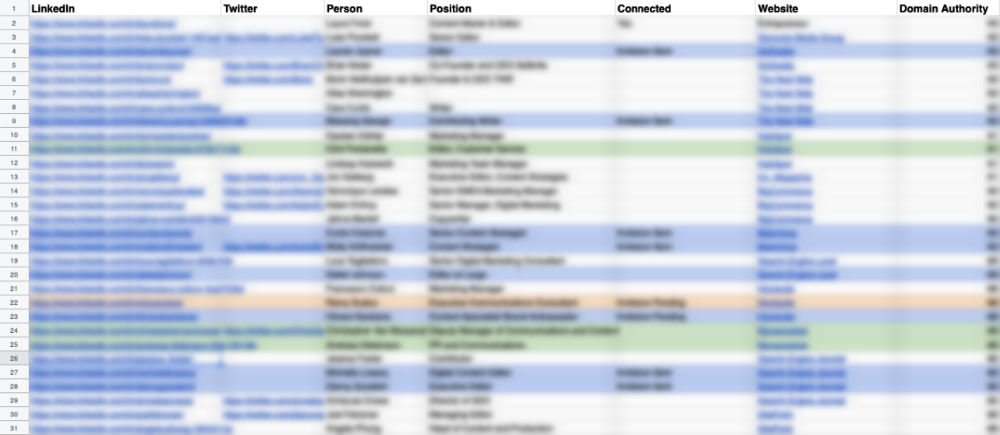
Aim to send about 50 connections a day. After a month, review the invites you sent out and remove the people who didn’t accept. It’s a pretty simple strategy for growing your network.
That covers how to grow your LinkedIn account and track results. There are no hacks here or instant results. Growing your LinkedIn account will take time, but this is an investment in your future.
How to Develop a Relationship With Your Connections
As you grow your network you need to start interacting with your new connections. Spend a bit of time every day liking posts content and leaving comments. You’ll naturally find yourself chatting and engaging with people.
This shouldn’t feel like a struggle.
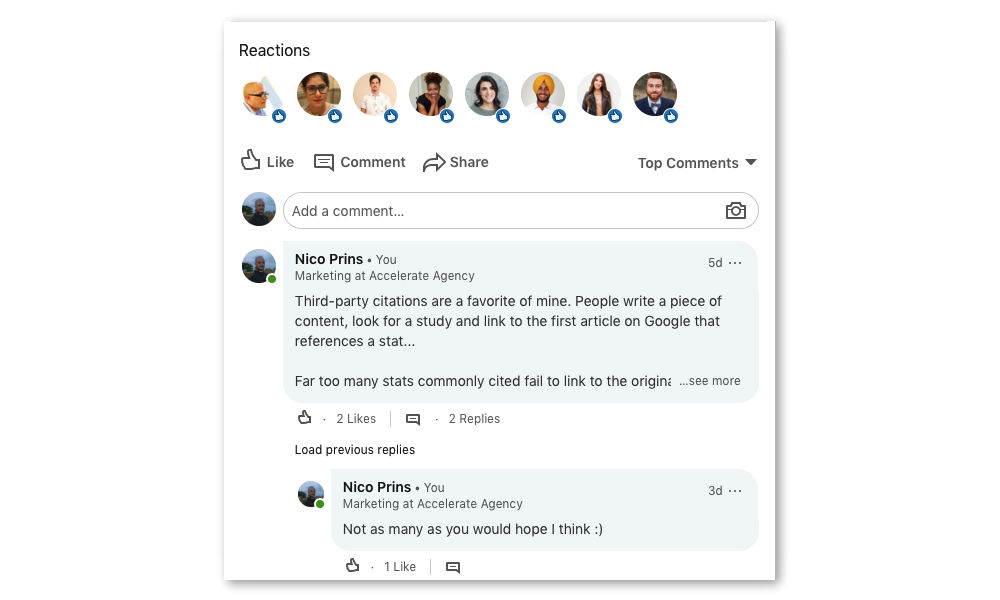
If you want to be strategic focus your networking efforts on certain people. For example, you could exclusively interact with a few key stakeholders in a company you want to work with. Essentially all you are doing is the kind of professional networking you should be doing offline.
You might be thinking that all of this sounds like a lot of work. You could choose to hire a Virtual Assistant (VA) to manage this whole process for you.
How to Find Relevant LinkedIn Marketing Groups
Joining relevant LinkedIn marketing groups is a lot less time consuming than increasing the number of connections you have. It still takes a bit of effort of course.
You’ll need to do a bit of intuitive searching to identify relevant groups to join. You can do this through LinkedIn’s internal search function. Alternatively, a quick search for “best NICHE groups on Linkedin” on Google will normally result in a suitable list post in the SERPS.
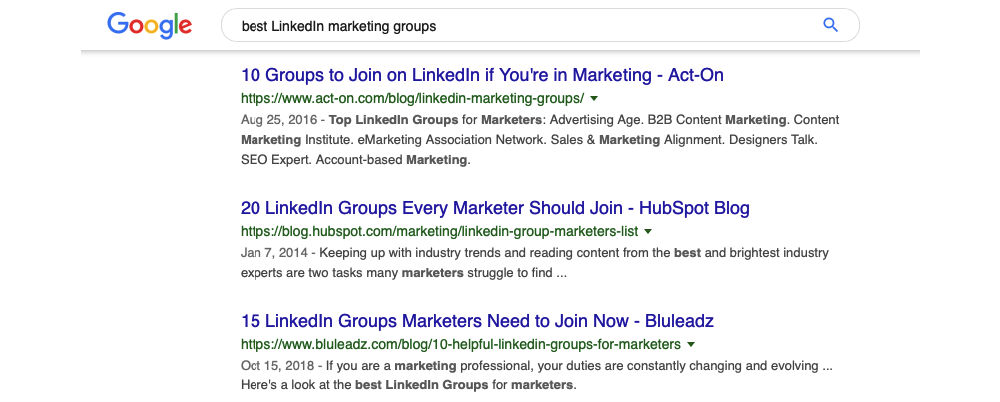
You will still need to review how active the group is. Some groups that appear relevant and have lots of members aren’t active. Other groups are a lot more active. You need to find these types of groups that have a lot of activity and then get involved.
Aim to spend a decent portion of time trying to interact with the key influencers in the group. You know, the cool kids. Every group has cool kids.
How to Promote Your Content On LinkedIn
Before we get onto strategies for engaging your audience I want to emphasize a rather obvious point. It is going to take you a lot of work to get to this point. I know working hard is not sexy. Everyone is looking for a shortcut.
This is a shortcut in the sense that the strategy will get you results. You will save time by making less mistakes. You will still have to work hard though.
With that rather obvious warning out of the way, I want to cover a LinkedIn marketing strategy for engaging your audience and promoting content that gets clicks to your blog. I’ll then wrap this post up with some LinkedIn marketing hacks you can try.
The Peer Review Marketing Campaign
The first strategy I’m going to cover I call the Peer Review Marketing Campaign. It’s a process that relies on creating a core audience who are engaged with the content you are creating.
You remember what I said at the start…
- LinkedIn is a social network populated by people who want to make a good impression with their peers. Your job is to provide them with an opportunity to look clever or be cool.
The starting point for your campaign is to ask people for input on the content that you are creating. Here’s an example from a recent campaign we ran.
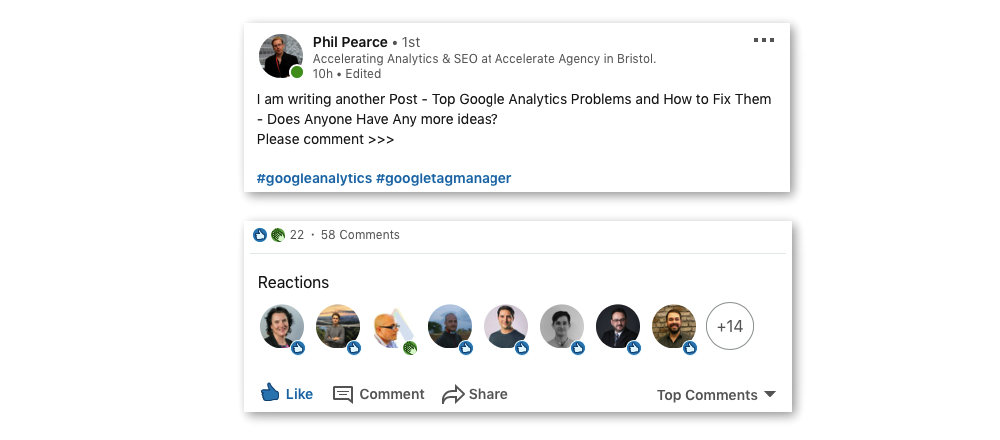
You can see how this post generated many comments. The thing about a post with high engagement is that LinkedIn promotes the content. A post with a lot of engagement is likely to appear as a notification in the account of your LinkedIn contacts. This increases the chance of further interaction.
The great thing is that it’s pretty easy to consistently get these results on Linkedin. Below are a few simple hacks that you can implement to achieve these results:
- Ask your friends to comment on the post within the first five minutes of publication. This is when LinkedIn seems to decide how widely your content should be shared in the feeds of your contacts
- Tag people who you think are likely to engage with your content in the comments below the post
- Leave comments across different groups asking for input into the post you published that has a lot of comments
You can see the fundamentals of this marketing strategy are based on asking people to get involved. It’s a lot easier to do this than rely on your post to organically get traction.
After asking for input create that ultimate blog post you promised them.
When you finally publish that article repeat steps 1-3. Make sure to tag everyone who contributed to the article thanking them for their input. You want to do this multiple times over the course of a week.
LinkedIn Marketing Hacks to Increase Engagement
We’re finally getting to the end of this guide to LinkedIn marketing. As a way to wrap up this post, I thought I’d share a couple of effective LinkedIn marketing hacks that you should be aware of. I’ll start with an algorithm hack.
How to Get More Clicks to Your Content
Like most websites LinkedIn wants their audience to stay on their site. They don’t want people visiting LinkedIn to click on external links and head off the site. As a result of this vested interest, any posts without links in will get a higher reach than content without links.
Luckily the algorithm isn’t very clever at the moment. To increase your reach to a blog post simply make a post with a featured image and then link to the post in the first comment. You can see how Noah Kagan did this in the post below.
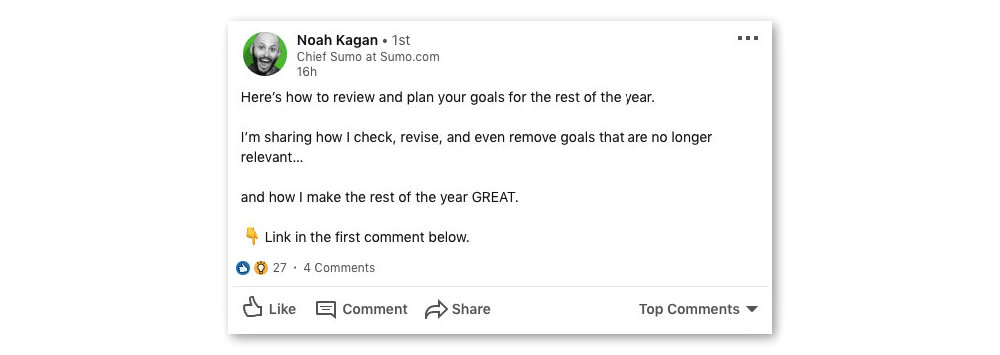
Another way to get the same result is to post your comment as usual. Get a comment or two from a friend and then simply edit your post and insert a link to your blog post.
Wrapping Things Up
In this guide I’ve tried to provide you with a framework of a proven LinkedIn marketing strategy you can use to generate more clicks to your website, get guest post opportunities and generate fresh leads for your business. The fundamentals of this strategy are pretty simple, but it will require a lot of work on your part to receive all of the benefits.
In addition to a strategy for strategically growing your audience, I also included a couple of LinkedIn marketing hacks you can use today to increase your reach. I hope after reading this guide you decide to act and apply some of these strategies to your company. If you have any questions let me know in the comments below.
Related articles
40 social media buzzwords every marketer needs to know
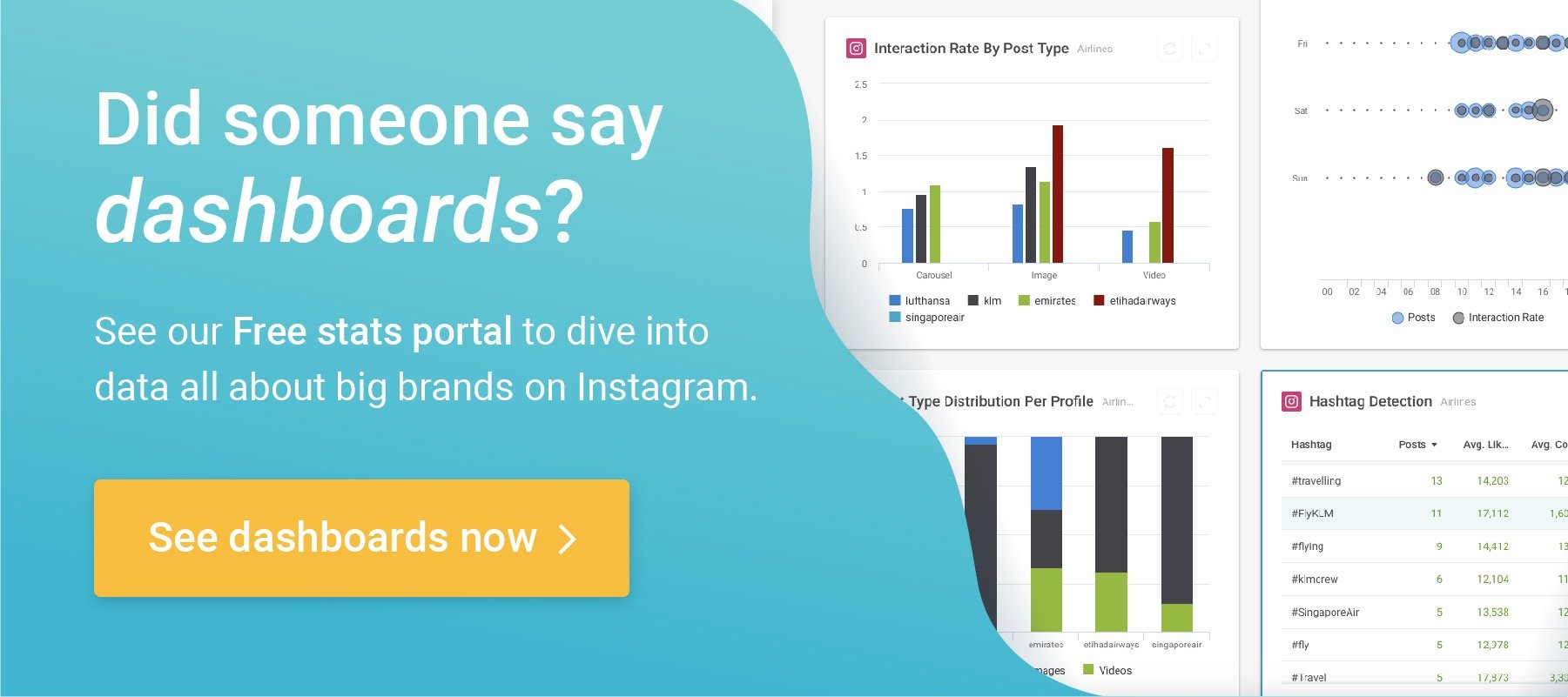
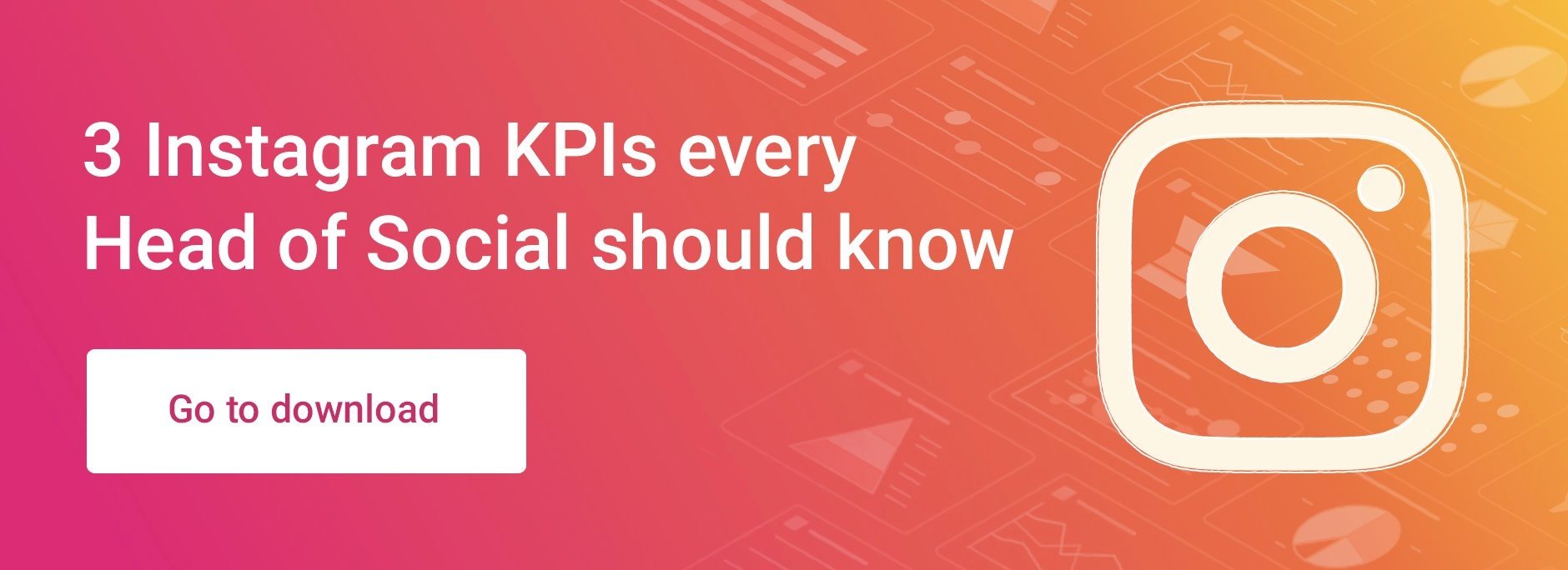

Join the conversation. Leave us a comment below!